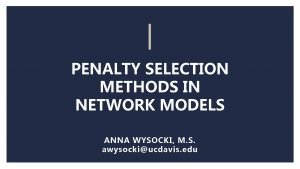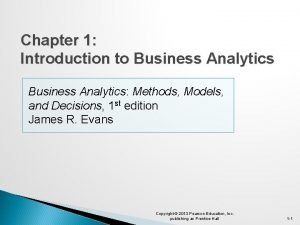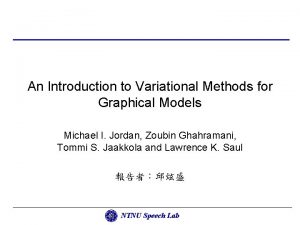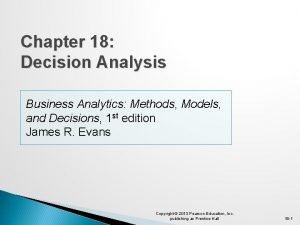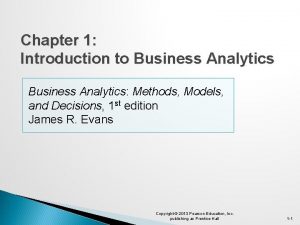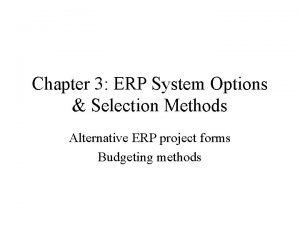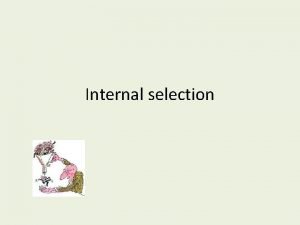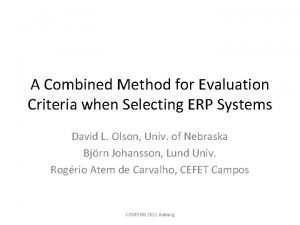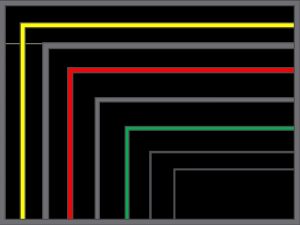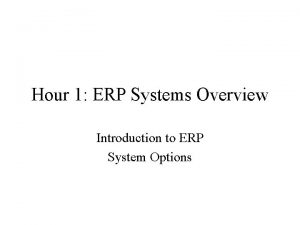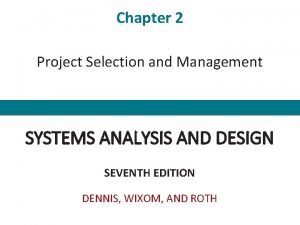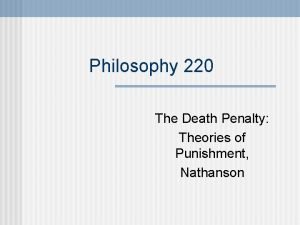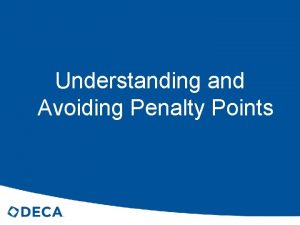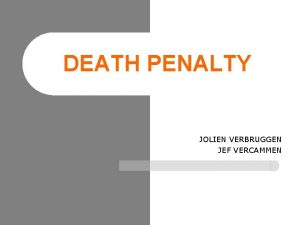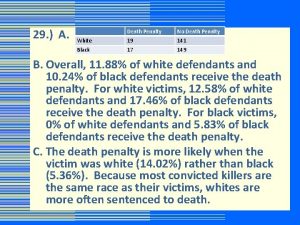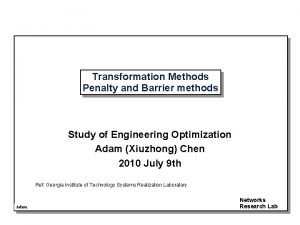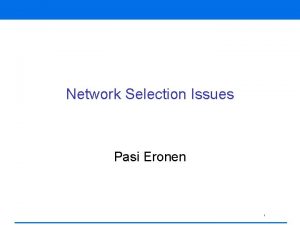PENALTY SELECTION METHODS IN NETWORK MODELS ANNA WYSOCKI






































- Slides: 38

PENALTY SELECTION METHODS IN NETWORK MODELS ANNA WYSOCKI, M. S. awysocki@ucdavis. edu

GAUSSIAN GRAPHICAL MODELS

How are network models estimated?

Ω= -1 Σ i i. 953 j. 01 k -. 03 l 0 j . 01 . 957 -. 06 -. 02 k -. 03 -. 06 . 957 0 l 0 -. 02 0 . 952

Ω= -1 Σ i i. 953 j. 01 k -. 03 l 0 j . 01 . 957 -. 06 -. 02 k -. 03 -. 06 . 957 0 l 0 -. 02 0 . 952

Ω= -1 Σ i i. 953 j. 01 k -. 03 l 0 j . 01 . 957 -. 06 -. 02 k -. 03 -. 06 . 957 0 l 0 -. 02 0 . 952


Choosing lambda is extremely important. As different lambdas can correspond to different networks.


PENELTY SELECTION • Cross-Validation. METHODS • Stability Approach to Regularization Selection (St. ARS) • Rotation Information Criterion (RIC) • Extended Bayesian Information Criterion (EBIC)

PENELTY SELECTION METHODS

PENELTY SELECTION METHODS i≠j

PENELTY SELECTION • Cross-Validation. METHODS • Stability Approach to Regularization Selection (St. ARS) • Rotation Information Criterion (RIC) • Extended Bayesian Information Criterion (EBIC)



PENELTY SELECTION • Cross-Validation. METHODS • Stability Approach to Regularization Selection (St. ARS) • Rotation Information Criterion (RIC) • Extended Bayesian Information Criterion (EBIC)

• Expected Performance • CV Over-selects (Chetverikov et al. , 2017; Yu & Feng, 2013) • EBIC + PC size (Kuisman & Sillanpaa, 2016) • Low-Dimensional • EBIC Performance (Epskamp, 2016; Epskmap, Borsboom & Fried, 2018) • EBIC vs non-regularized methods (Williams, Rhemtulla, Wysocki & Rast, 2018) • St. ARS vs. EBIC vs. RIC (Mohammadi & Wit, 2015)

• Expected Performance • CV Over-selects (Chetverikov et al. , 2017; Yu & Feng, 2013) • EBIC + PC size (Kuisman & Sillanpaa, 2016) • Low-Dimensional • EBIC Performance (Epskamp, 2016; Epskmap, Borsboom & Fried, 2018) • EBIC vs non-regularized methods (Williams, Rhemtulla, Wysocki & Rast, 2018) • St. ARS vs. EBIC vs. RIC (Mohammadi & Wit, 2015)

• Expected Performance • CV Over-selects (Chetverikov et al. , 2017; Yu & Feng, 2013) • EBIC + PC size (Kuisman & Sillanpaa, 2016) • Low-Dimensional • EBIC Performance (Epskamp, 2016; Epskmap, Borsboom & Fried, 2018) • EBIC vs non-regularized methods (Williams, Rhemtulla, Wysocki & Rast, 2018) • St. ARS vs. EBIC vs. RIC (Mohammadi & Wit, 2015)

• Expected Performance • CV Over-selects (Chetverikov et al. , 2017; Yu & Feng, 2013) • EBIC + PC size (Kuisman & Sillanpaa, 2016) • Low-Dimensional • EBIC Performance (Epskamp, 2016; Epskmap, Borsboom & Fried, 2018) • EBIC vs non-regularized methods (Williams, Rhemtulla, Wysocki & Rast, 2018) • St. ARS vs. EBIC vs. RIC (Mohammadi & Wit, 2015)

• Expected Performance • CV Over-selects (Chetverikov et al. , 2017; Yu & Feng, 2013) • EBIC + PC size (Kuisman & Sillanpaa, 2016) • Low-Dimensional • EBIC Performance (Epskamp, 2016; Epskmap, Borsboom & Fried, 2018) • EBIC vs non-regularized methods (Williams, Rhemtulla, Wysocki & Rast, 2018) • St. ARS vs. EBIC vs. RIC (Mohammadi & Wit, 2015)

1. What is the best method for psychological data? 2. How does partial correlation size affect performance? 3. How does sparsity affect performance?

SIMULATION PROCEDURE • Conditions • Sample Size (100, 250, 500, …, 3000) • Number of Variables (20) • Sparsity (. 10, . 20, …, . 90) • Partial Correlation Range (-. 1, . 1 ; -. 3, . 3 ; -. 5, . 5) • Performance Measures • False Positive Rate • Sensitivity

How does sparsity affect method performance?

How does partial correlation size affect method performance?

What is the best method for psychological data?

SUMMARY • Sparsity and partial correlation size matter • CV: Sensitive but with a cost • EBIC: Inconsistent Results • St. ARS + RIC most balanced results

THANK YOU! ANNA WYSOCKI, M. S. awysocki@ucdavis. edu










 Anna wysocki
Anna wysocki Leszek wysocki pwr
Leszek wysocki pwr Leszek wysocki pwr
Leszek wysocki pwr Fraktale ciekawostki
Fraktale ciekawostki Matthew wysocki
Matthew wysocki Matt wysocki
Matt wysocki Difference between models and semi modals
Difference between models and semi modals Business analytics methods models and decisions
Business analytics methods models and decisions An introduction to variational methods for graphical models
An introduction to variational methods for graphical models Business analytics methods models and decisions
Business analytics methods models and decisions Business analytics methods models and decisions
Business analytics methods models and decisions Four special cases in linear programming
Four special cases in linear programming The engineering design of systems: models and methods
The engineering design of systems: models and methods Direct wax pattern
Direct wax pattern Erp system options and selection methods
Erp system options and selection methods Initial assessment methods for internal selection
Initial assessment methods for internal selection Selection methods in hrm
Selection methods in hrm Erp selection methods and criteria
Erp selection methods and criteria The steps involved in portfolio selection
The steps involved in portfolio selection Role of methods
Role of methods Acmee model of sales training
Acmee model of sales training Introduction to erp systems
Introduction to erp systems Selection project chap
Selection project chap Balancing selection vs stabilizing selection
Balancing selection vs stabilizing selection Artificial selection vs natural selection
Artificial selection vs natural selection K selected
K selected Natural selection vs artificial selection
Natural selection vs artificial selection Difference between continuous and discontinuous variation
Difference between continuous and discontinuous variation What is artificial selection
What is artificial selection Clumped dispersion
Clumped dispersion Natural selection vs artificial selection
Natural selection vs artificial selection Two way selection and multiway selection
Two way selection and multiway selection Two way selection and multiway selection in c
Two way selection and multiway selection in c Mass selection
Mass selection Deontology death penalty
Deontology death penalty Echr death penalty
Echr death penalty Death penalty philosophy
Death penalty philosophy Affine gap penalty formula
Affine gap penalty formula Thesis statement about death penalty
Thesis statement about death penalty
